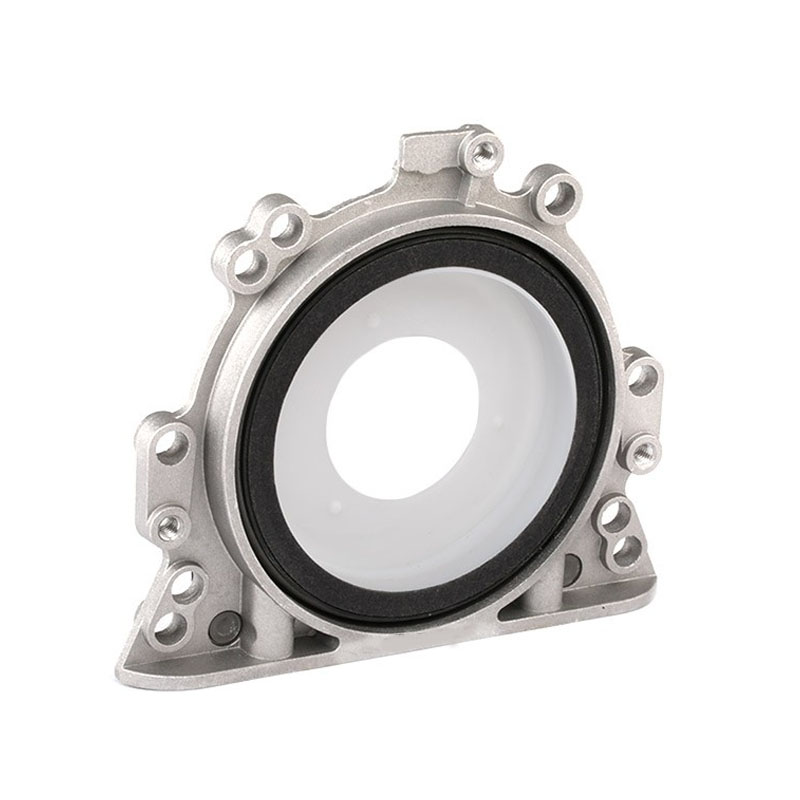steering gear input shaft seal kit
Understanding Steering Gear Input Shaft Seal Kits
The steering system of a vehicle is crucial for ensuring smooth and efficient handling. One of the essential components within this system is the steering gear input shaft and its corresponding seal. Over time, seals can wear out or become damaged, leading to potential leaks and other issues. This brings us to the steering gear input shaft seal kit, a vital component for maintenance and repair.
What is a Steering Gear Input Shaft Seal Kit?
A steering gear input shaft seal kit is a collection of components designed to replace the old or worn seals in the steering gear assembly. The input shaft is the point where the steering column connects to the power steering gear. The seal prevents fluid from leaking out of the gear assembly, thus ensuring that the steering remains responsive and effective. The kit typically includes a new seal, O-rings, and sometimes additional hardware necessary for the replacement process.
Importance of the Input Shaft Seal
The input shaft seal plays a pivotal role in the steering system. If this seal is compromised, power steering fluid can leak out, which not only diminishes the power steering performance but can also lead to more serious damage within the steering assembly. Symptoms of a failing seal may include a noticeable decrease in steering performance, the presence of fluid under the vehicle, and abnormal noises when turning the steering wheel.
Signs of a Failing Input Shaft Seal
1. Fluid Leaks The most obvious sign of a failing input shaft seal is fluid pooling under your vehicle. If you find power steering fluid on your driveway or garage floor, it may indicate a failing seal.
2. Steering Effort If you notice that steering your vehicle requires more effort than normal, it could be due to low power steering fluid levels caused by a leak at the input shaft seal.
3. Unusual Noises Grinding or whining noises when turning the steering wheel can indicate that the power steering fluid is low, often correlated with a failing seal.
steering gear input shaft seal kit

How to Replace the Input Shaft Seal
Replacing the steering gear input shaft seal is a task that requires some mechanical knowledge, but it is achievable for a dedicated DIYer with the right tools. Here’s a general guide to the replacement process
1. Preparation Begin by safely lifting the vehicle and securing it on jack stands. Ensure you have the necessary tools and the replacement seal kit.
2. Remove the Steering Gear Disconnect the steering column from the rack and pinion assembly. Remove any surrounding components that may obstruct access to the steering gear.
3. Extract the Old Seal Once the steering gear is accessible, carefully remove the old input shaft seal. This may require a seal puller or other specialized tools.
4. Clean the Area Before installing the new seal, clean the area thoroughly to ensure no debris or old fluid interferes.
5. Install the New Seal Place the new seal into position, ensuring it is seated correctly. Some kits may recommend lubrication with power steering fluid to help during installation.
6. Reassemble Components Reverse the disassembly process to reattach the steering gear and connect the steering column. Fill the power steering fluid reservoir to the appropriate level.
7. Test Drive Once everything is reassembled, test drive the vehicle to ensure the steering system functions correctly. Keep an eye out for leaks and listen for any unusual noises.
Conclusion
The steering gear input shaft seal kit is a critical component in maintaining your vehicle's steering system. Regular checks and timely replacement of this seal can prevent costly repairs and ensure safe driving conditions. If you suspect an issue with your steering system, it's essential to address it promptly to avoid further complications. Whether you're a seasoned mechanic or a car enthusiast, understanding how to replace this vital component can save you time and money in the long run.
-
Understanding the Front Main Engine Seal: Purpose, Maintenance, and Installation
News Jul.29,2025
-
Understanding O-Rings and Seal Rings: Types, Applications, and Custom Solutions
News Jul.29,2025
-
Understanding Crankshaft Oil Seals: Rear Seals, Pulley Seals, and Their Role in Engine Integrity
News Jul.29,2025
-
The Importance of Front and Rear Crankshaft Seals in Engine Performance and Oil Management
News Jul.29,2025
-
Crank Oil Seals: Functions, Types, and Cost Considerations in Engine Maintenance
News Jul.29,2025
-
A Comprehensive Guide to O-Rings and Seals: Types, Materials, and Global Applications
News Jul.29,2025
-
Mastering Diesel and Performance Engine Maintenance: A Guide to Critical Oil Gaskets
News Jul.28,2025
Products categories















